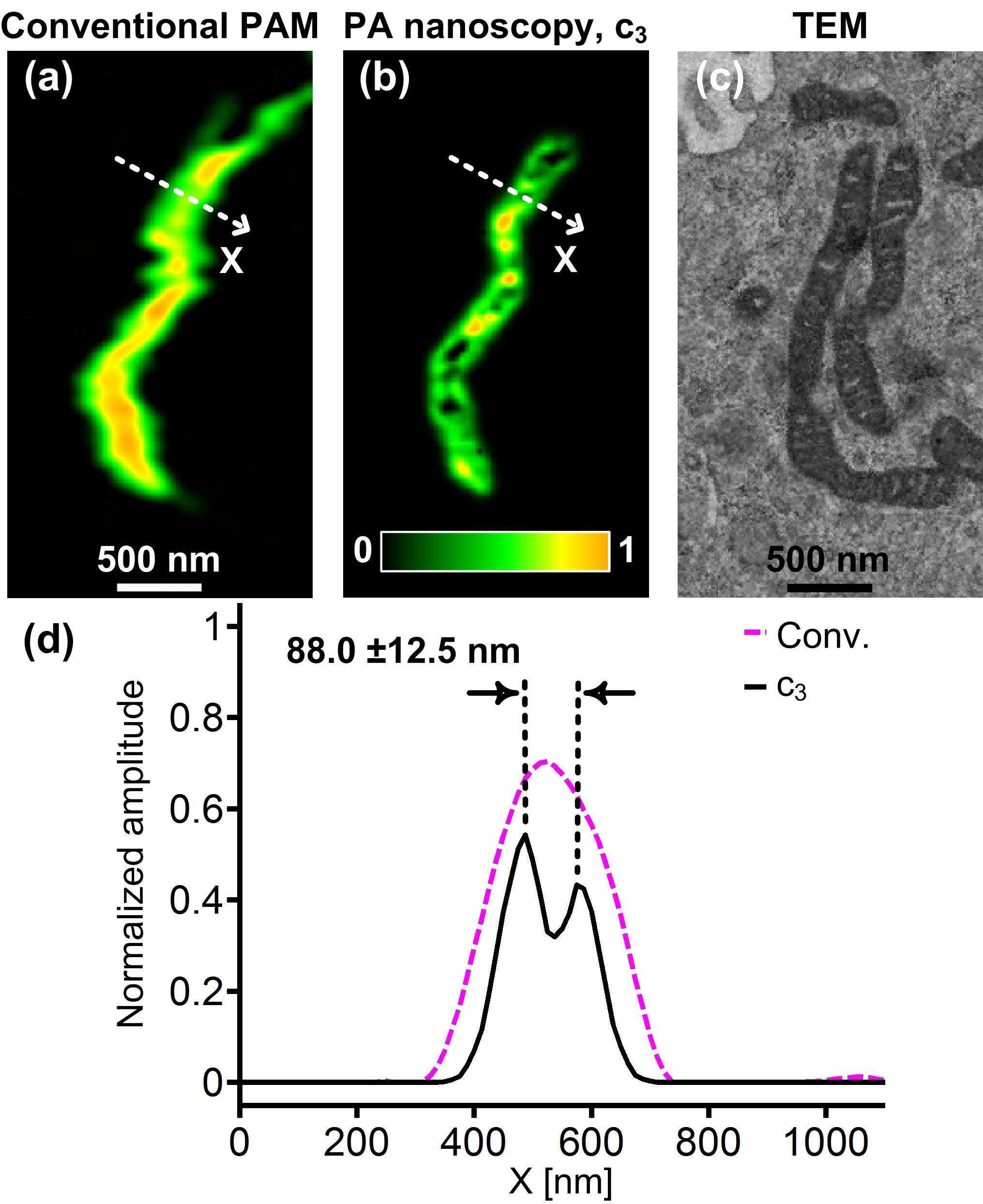Super-resolution microscopy techniques have opened new opportunities to explore sub-cellular structures and dynamics not resolvable in conventional far-field microscopy. However, relying on staining with exogenous fluorescent markers, these techniques can sometimes introduce undesired artifacts to the image, mainly due to large tagging agent sizes and insufficient or variable labeling densities. By contrast, the use of endogenous pigments allows imaging of the intrinsic structures of biological samples with unaltered molecular constituents. Here, we persent label-free photoacoustic (PA) nanoscopy, which is exquisitely sensitive to optical absorption, with 88 nm resolution. At each scanning position, multiple PA signals are successively excited with increasing laser pulse energy. Owing to optical saturation or nonlinear thermal expansion, the PA amplitude depends on the incident optical fluence nonlinearly. The high-order dependence, quantified by polynomial fitting, provides super-resolution imaging with optical sectioning. In addition, we use a photoacoustic spectrometer to show how the nonlinear PA spectrum of different molecules (e.g., oxygenated and deoxygenated hemoglobin) has both wavelength and concentration dependence.


